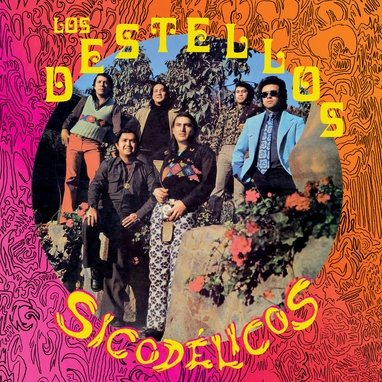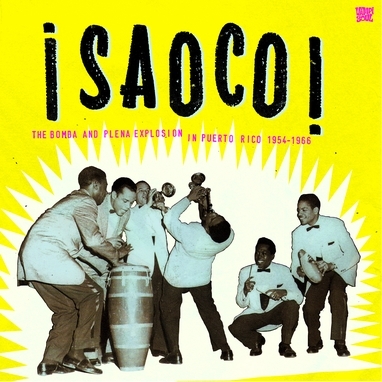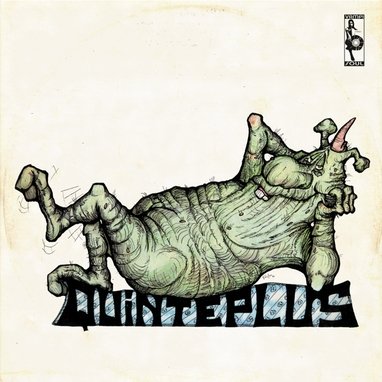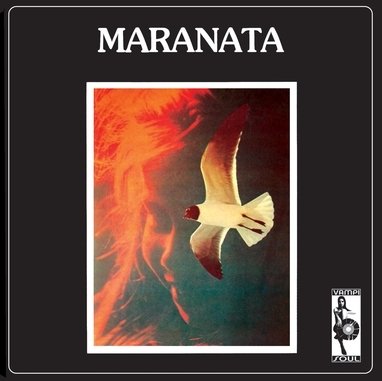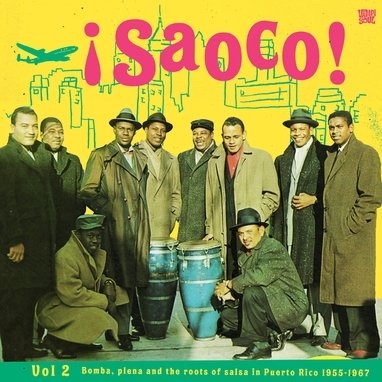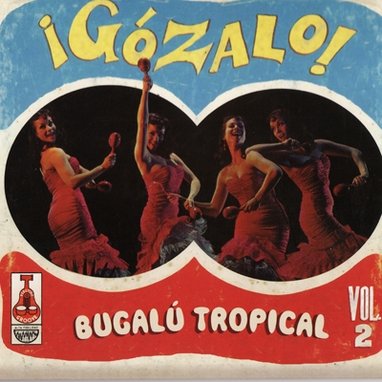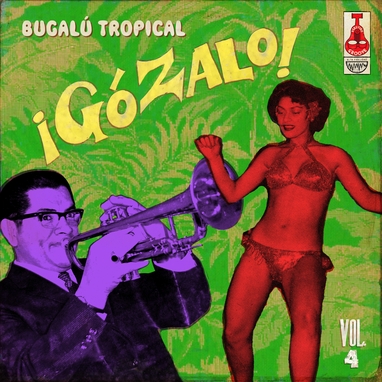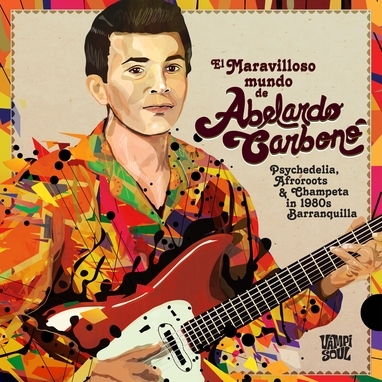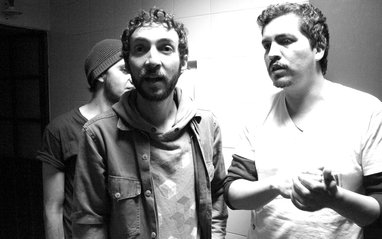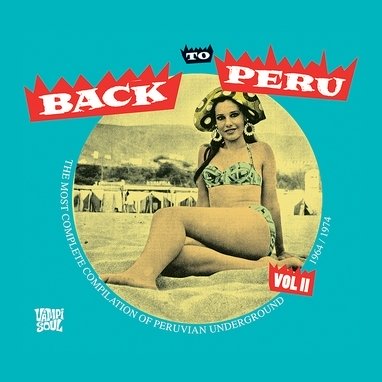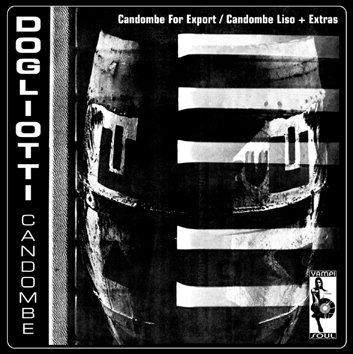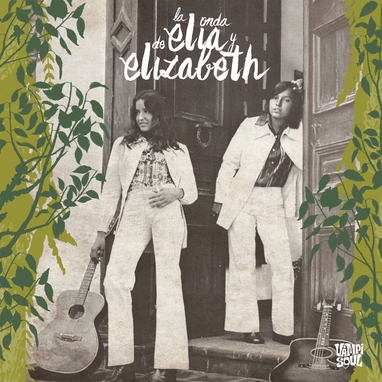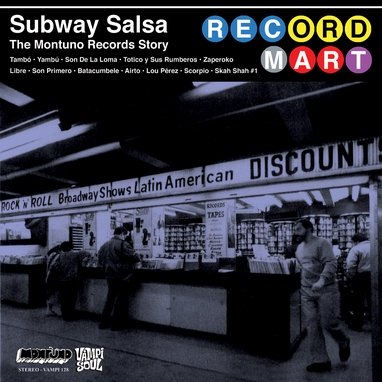Los Destellos
Sicodélicos
30,00€
Vampisoul
Los Destellos
Sicodélicos
A 2019 Record Store Day release. In 1968 Enrique Delgado, leader of Los Destellos, launched an original musical proposition that combined tropical music, rock and touches from other genres, which he arranged by drawing on his extensive experience accompanying stars of Andean and Coastal music from Peru. He was determined to find his own style and created an earthy vibe that people still love dancing to today. We’ve defined a typically Peruvian cumbia, which, however strange it might seem, people like in Colombia too and in several other countries, he commented in 1973. Enrique Delgado Montes was a precocious musician from Lima, passionate about waltzes, polkas and marineras from Creole music from an early age, who founded Los Destellos in 1966 for purely commercial reasons, aiming to liven up exclusive social gatherings with a wide repertoire of danceable music. They released two 7-inch vinyl records with this line-up, which failed to make much impact. In mid-1967 he revamped the band to embark on the task of creating a new style that would be a hit with dance fans and guarantee economic success, influenced by the visit of Hugo Blanco to different cities across Peru, who played cumbias and other tropical rhythms using the harp as a solo instrument. He must also have been encouraged by seeing the international success of the more commercial side of Colombian cumbia, as bands like Los Teen Agers and Los Falcons used to pose for front covers like rock stars and played electric guitars. Back then, the electric guitar was an essential part of the sound of Peruvian groups who followed Cuban music, such as Compay Quinto and Pedro Miguel y sus Maracaibos, and the creators of the huayno cumbia: Los Demonios del Mantaro. Rock was another ingredient that this Beatles fan added to the mix. His goal was to find a formula through which he could integrate the different musical genres from Peru, ranging from Creole music from the Pacific coast to the exotic dances from the Amazon; acknowledging Peruvian cultural diversity, which the political classes would take another decade to incorporate in their own political platforms. He put all the ingredients together and mixed them well before going into the recording studio. The new band was a hit from their first 45 rpm, released at the beginning 1968. Halfway through the year, Fernando Quiroz joined the line-up. Enrique was looking for a guitarist who played rock and somebody recommended Fernando, who had just had a taste of fame with the beat band Los Zany’s. Tito Caycho, who had played second guitar up to that point, moved to bass guitar. The initial line-up also included Carlos Ramírez, Eduardo Rivera and Rodolfo Casaretto. This record selects the Los Destellos tracks closest to the genres of psychedelia, beat and boogaloo, released between 1968 and 1978, with Enrique playing lead guitar on the bulk of them, although Fernando Quiroz takes the lead on five compositions. In the 21st century, several compilations such as Vampisoul’s own Cumbia Beat series have helped globalise Peruvian cumbia, winning fans from all over the world. This sound is kept alive today with re-releases of old records and the emergence of new artists who mix it with the rhythms of other countries. Veteran musicians have also returned to the stage to perform international tours, during which they never fail to revive a Los Destellos classic. Enrique left us in 1996 so he did not live to see the revival of his music. Dozens of instrumentalists and singers were part of his band and went on to form other acts. He never lost his predilection for the Creole genre but until the last day of his life he also kept his cumbiambera links, maintaining his status as an expert and patriarch of Peruvian cumbia.
Productos relacionados
30,00€
A 2019 Record Store Day release. In 1968 Enrique Delgado, leader of Los Destellos, launched an original musical proposition that combined tropical music, rock and touches from other genres, which he arranged by drawing on his extensive experience accompanying stars of Andean and Coastal music from Peru. He was determined to find his own style and created an earthy vibe that people still love dancing to today. We’ve defined a typically Peruvian cumbia, which, however strange it might seem, people like in Colombia too and in several other countries, he commented in 1973. Enrique Delgado Montes was a precocious musician from Lima, passionate about waltzes, polkas and marineras from Creole music from an early age, who founded Los Destellos in 1966 for purely commercial reasons, aiming to liven up exclusive social gatherings with a wide repertoire of danceable music. They released two 7-inch vinyl records with this line-up, which failed to make much impact. In mid-1967 he revamped the band to embark on the task of creating a new style that would be a hit with dance fans and guarantee economic success, influenced by the visit of Hugo Blanco to different cities across Peru, who played cumbias and other tropical rhythms using the harp as a solo instrument. He must also have been encouraged by seeing the international success of the more commercial side of Colombian cumbia, as bands like Los Teen Agers and Los Falcons used to pose for front covers like rock stars and played electric guitars. Back then, the electric guitar was an essential part of the sound of Peruvian groups who followed Cuban music, such as Compay Quinto and Pedro Miguel y sus Maracaibos, and the creators of the huayno cumbia: Los Demonios del Mantaro. Rock was another ingredient that this Beatles fan added to the mix. His goal was to find a formula through which he could integrate the different musical genres from Peru, ranging from Creole music from the Pacific coast to the exotic dances from the Amazon; acknowledging Peruvian cultural diversity, which the political classes would take another decade to incorporate in their own political platforms. He put all the ingredients together and mixed them well before going into the recording studio. The new band was a hit from their first 45 rpm, released at the beginning 1968. Halfway through the year, Fernando Quiroz joined the line-up. Enrique was looking for a guitarist who played rock and somebody recommended Fernando, who had just had a taste of fame with the beat band Los Zany’s. Tito Caycho, who had played second guitar up to that point, moved to bass guitar. The initial line-up also included Carlos Ramírez, Eduardo Rivera and Rodolfo Casaretto. This record selects the Los Destellos tracks closest to the genres of psychedelia, beat and boogaloo, released between 1968 and 1978, with Enrique playing lead guitar on the bulk of them, although Fernando Quiroz takes the lead on five compositions. In the 21st century, several compilations such as Vampisoul’s own Cumbia Beat series have helped globalise Peruvian cumbia, winning fans from all over the world. This sound is kept alive today with re-releases of old records and the emergence of new artists who mix it with the rhythms of other countries. Veteran musicians have also returned to the stage to perform international tours, during which they never fail to revive a Los Destellos classic. Enrique left us in 1996 so he did not live to see the revival of his music. Dozens of instrumentalists and singers were part of his band and went on to form other acts. He never lost his predilection for the Creole genre but until the last day of his life he also kept his cumbiambera links, maintaining his status as an expert and patriarch of Peruvian cumbia.
Productos relacionados
Sicodélicos
A 2019 Record Store Day release. In 1968 Enrique Delgado, leader of Los Destellos, launched an original musical proposition that combined tropical music, rock and touches from other genres, which he arranged by drawing on his extensive experience accompanying stars of Andean and Coastal music from Peru. He was determined to find his own style and created an earthy vibe that people still love dancing to today. We’ve defined a typically Peruvian cumbia, which, however strange it might seem, people like in Colombia too and in several other countries, he commented in 1973. Enrique Delgado Montes was a precocious musician from Lima, passionate about waltzes, polkas and marineras from Creole music from an early age, who founded Los Destellos in 1966 for purely commercial reasons, aiming to liven up exclusive social gatherings with a wide repertoire of danceable music. They released two 7-inch vinyl records with this line-up, which failed to make much impact. In mid-1967 he revamped the band to embark on the task of creating a new style that would be a hit with dance fans and guarantee economic success, influenced by the visit of Hugo Blanco to different cities across Peru, who played cumbias and other tropical rhythms using the harp as a solo instrument. He must also have been encouraged by seeing the international success of the more commercial side of Colombian cumbia, as bands like Los Teen Agers and Los Falcons used to pose for front covers like rock stars and played electric guitars. Back then, the electric guitar was an essential part of the sound of Peruvian groups who followed Cuban music, such as Compay Quinto and Pedro Miguel y sus Maracaibos, and the creators of the huayno cumbia: Los Demonios del Mantaro. Rock was another ingredient that this Beatles fan added to the mix. His goal was to find a formula through which he could integrate the different musical genres from Peru, ranging from Creole music from the Pacific coast to the exotic dances from the Amazon; acknowledging Peruvian cultural diversity, which the political classes would take another decade to incorporate in their own political platforms. He put all the ingredients together and mixed them well before going into the recording studio. The new band was a hit from their first 45 rpm, released at the beginning 1968. Halfway through the year, Fernando Quiroz joined the line-up. Enrique was looking for a guitarist who played rock and somebody recommended Fernando, who had just had a taste of fame with the beat band Los Zany’s. Tito Caycho, who had played second guitar up to that point, moved to bass guitar. The initial line-up also included Carlos Ramírez, Eduardo Rivera and Rodolfo Casaretto. This record selects the Los Destellos tracks closest to the genres of psychedelia, beat and boogaloo, released between 1968 and 1978, with Enrique playing lead guitar on the bulk of them, although Fernando Quiroz takes the lead on five compositions. In the 21st century, several compilations such as Vampisoul’s own Cumbia Beat series have helped globalise Peruvian cumbia, winning fans from all over the world. This sound is kept alive today with re-releases of old records and the emergence of new artists who mix it with the rhythms of other countries. Veteran musicians have also returned to the stage to perform international tours, during which they never fail to revive a Los Destellos classic. Enrique left us in 1996 so he did not live to see the revival of his music. Dozens of instrumentalists and singers were part of his band and went on to form other acts. He never lost his predilection for the Creole genre but until the last day of his life he also kept his cumbiambera links, maintaining his status as an expert and patriarch of Peruvian cumbia.
A 2019 Record Store Day release. In 1968 Enrique Delgado, leader of Los Destellos, launched an original musical proposition that combined tropical music, rock and touches from other genres, which he arranged by drawing on his extensive experience accompanying stars of Andean and Coastal music from Peru. He was determined to find his own style and created an earthy vibe that people still love dancing to today. We’ve defined a typically Peruvian cumbia, which, however strange it might seem, people like in Colombia too and in several other countries, he commented in 1973. Enrique Delgado Montes was a precocious musician from Lima, passionate about waltzes, polkas and marineras from Creole music from an early age, who founded Los Destellos in 1966 for purely commercial reasons, aiming to liven up exclusive social gatherings with a wide repertoire of danceable music. They released two 7-inch vinyl records with this line-up, which failed to make much impact. In mid-1967 he revamped the band to embark on the task of creating a new style that would be a hit with dance fans and guarantee economic success, influenced by the visit of Hugo Blanco to different cities across Peru, who played cumbias and other tropical rhythms using the harp as a solo instrument. He must also have been encouraged by seeing the international success of the more commercial side of Colombian cumbia, as bands like Los Teen Agers and Los Falcons used to pose for front covers like rock stars and played electric guitars. Back then, the electric guitar was an essential part of the sound of Peruvian groups who followed Cuban music, such as Compay Quinto and Pedro Miguel y sus Maracaibos, and the creators of the huayno cumbia: Los Demonios del Mantaro. Rock was another ingredient that this Beatles fan added to the mix. His goal was to find a formula through which he could integrate the different musical genres from Peru, ranging from Creole music from the Pacific coast to the exotic dances from the Amazon; acknowledging Peruvian cultural diversity, which the political classes would take another decade to incorporate in their own political platforms. He put all the ingredients together and mixed them well before going into the recording studio. The new band was a hit from their first 45 rpm, released at the beginning 1968. Halfway through the year, Fernando Quiroz joined the line-up. Enrique was looking for a guitarist who played rock and somebody recommended Fernando, who had just had a taste of fame with the beat band Los Zany’s. Tito Caycho, who had played second guitar up to that point, moved to bass guitar. The initial line-up also included Carlos Ramírez, Eduardo Rivera and Rodolfo Casaretto. This record selects the Los Destellos tracks closest to the genres of psychedelia, beat and boogaloo, released between 1968 and 1978, with Enrique playing lead guitar on the bulk of them, although Fernando Quiroz takes the lead on five compositions. In the 21st century, several compilations such as Vampisoul’s own Cumbia Beat series have helped globalise Peruvian cumbia, winning fans from all over the world. This sound is kept alive today with re-releases of old records and the emergence of new artists who mix it with the rhythms of other countries. Veteran musicians have also returned to the stage to perform international tours, during which they never fail to revive a Los Destellos classic. Enrique left us in 1996 so he did not live to see the revival of his music. Dozens of instrumentalists and singers were part of his band and went on to form other acts. He never lost his predilection for the Creole genre but until the last day of his life he also kept his cumbiambera links, maintaining his status as an expert and patriarch of Peruvian cumbia.

